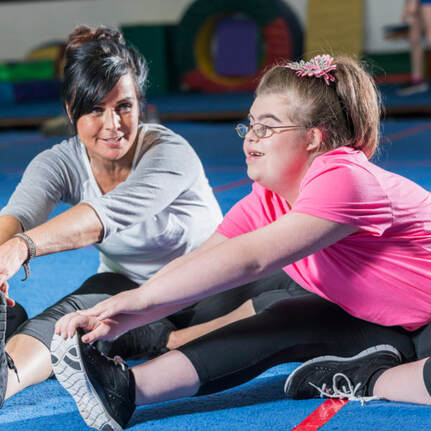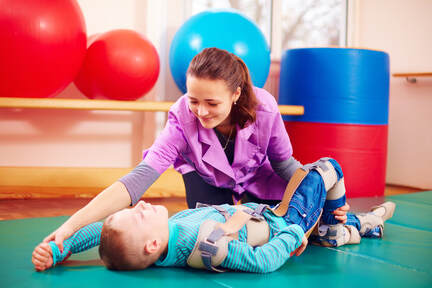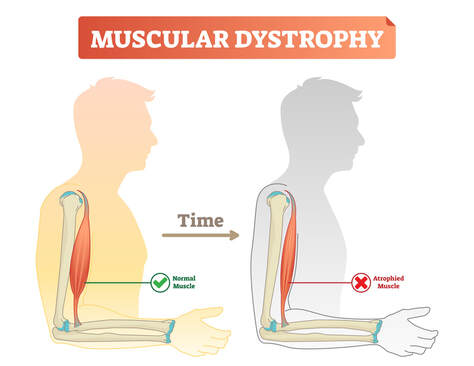|
What is Muscular Dystrophy? Muscular dystrophy (MD) is a collection of diseases that cause progressize loss of muscle mass and weakness. It occurs when mutated, abnormal genes disrupt the production of dystrophin, a protein that is needed to build muscle tissue. There are many different forms of MD and unfortunately there are no known cures. The main symptom that is present across all forms of MD is muscle loss and weakness over time, although the age and specific muscle groups this begins in, varies greatly. There are several types of MD, but the most common is Duchenne Muscular Dystrophy, it occurs predominantly in males and symptom onset will usually begin in early childhood. The most common symptoms include;
Effects of Muscular Dystrophy It has been reported that people with MD lose 11-55% of their muscular strength, when compared to those without MD. As the essential protein Dystrophin is absent, it means that muscle tissue cannot repair itself to rebuild, having severe consequences on their overall health long term. Some of these long term effects can include;
How can exercise help?
Exercise is an effective and accessible treatment option for people with MD. Tailored and specific exercise prescription is safe and can help to counteract muscle loss through increased strength and muscle mass. This assists in delaying the progression of MD and maintaining independence and physical function long term. Exercise has been shown to; increase joint stability, coordination, balance, muscular strength and endurance, fatigue levels, quality of life and mental health. It is recommended to seek exercise therapy as early as possible once diagnosed with MD. What type of exercise is best? For aerobic based exercise low impact and low intensity forms are best. This could include gentle walking, cycling or swimming, focusing on keeping them at a low-intensity level. To use a simple guide, if completing aerobic exercise with MD you should be able to hold a conversation without becoming breathless, if you are not able to, you are most likely working too hard. For strength training low load and high repetition should be the focus, starting small and very gradually building up. As muscle mass and strength will not increase at the same rate as those without MD it is important to not overdo it with strength training. Stretching is also beneficial for maintaining joint range of movement and preventing stiffness. Being mindful to not over extend through a stretch as this with MD can be hypermobile in some joints due to the lack of muscle mass surrounding them and adapted movement patterns. If you have difficulty stretching, having someone assist you with these movements can also be beneficial. If you would like more information about exercising with Muscular Dystrophy or to chat about seeing one of our Exercise Physiologists, please get in touch at [email protected] Written By, Aleisha Michael Accredited Exercise Physiologist.
1 Comment
 What is an Intellectual or Developmental Disability? An Intellectual Disability (ID) or Developmental Disability (DD) are described as limitations in adaptive behaviours and intellectual functioning (things such as reasoning, learning and problem solving). These limitations have an impact on an individual’s everyday social and practical skills. Specific conditions can include Autism Spectrum Disorder (ASD), Attention Deficit Hyperactivity Disorder (ADHD or a specific genetic or learning disorder such as Down Syndrome. There are 13% of Australian children diagnosed with an Intellectual or developmental disability. This has varying levels of impact on each child’s life depending on the significance of the limitation. It can make communication difficult, particularly interaction in social contexts, they will often exhibit behaviours with repetitive patterns and will find it difficult to adapt to changes in routine. In some children, particularly those with down syndrome they may also experience additional challenges such as poor eyesight, balance, low muscle tone and hyper flexibility. Why are they at increased risk? Those diagnosed with an Intellectual or Developmental Disability are at an increased risk or many comorbidities developing, due to the nature of their more sedentary based lifestyle. The risk factors that have a significant impact on the likelihood of developing an additional health condition include;
How does exercise help? Individuals with an Intellectual or Developmental Disability experience all of the same positive benefits from physical activity as Individuals without a disability BUT it can also have some additional benefits! Physical activity causes an improved level of intellectual functioning, behaviour and physical health, which have been shown to directly affect the personality of children with ID or DD. In Australia there are currently only 36% of children with an ID or DD meeting the physical activity guidelines. One of the most positive benefits physical activity can produce in ID and DD children is an increase in their focus and ability to concentrate for increased periods of time. This happens through the body moving and causing stimulation in the brain to improve the efficiency of brain neurotransmitters. These are linked to the hormone called Dopamine which assists in controlling attention levels. When regular movement occurs regularly their ability to focus is maintained throughout the day providing increased productivity and learning opportunities. Just some of the other many benefits that physical activity can provide are;
Top tips! When working with ID or DD individuals it is important to be aware of a few limitations or special considerations that may be present.
By Aleisha Michael Accredited Exercise Physiology |
AuthorSLisa Parkinson Archives
July 2024
Categories
All
|



 RSS Feed
RSS Feed